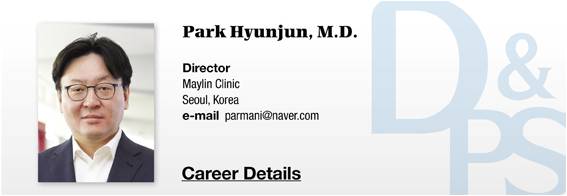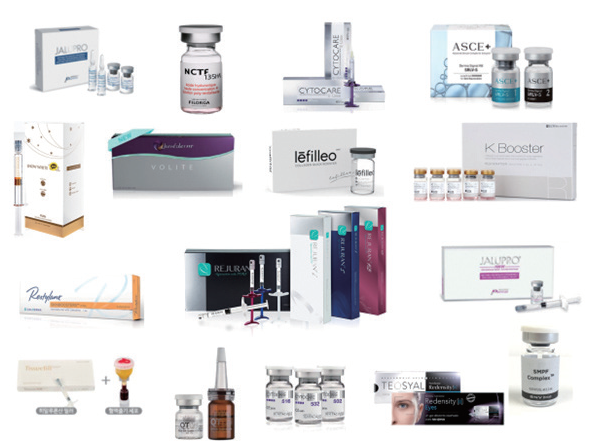
▶ Previous Artlcle: #1-4. Overview of Skin Booster
1. Growth factor(synthetic, stem cell cultured media, PRP, PDRN/PN)
2. Vitamins and vitamin-like substances
3. Amino acids and related compounds
4. Minerals
5. Hyaluronic acid
6. etc.(nucleosides, coenzymes, glutathion, exosome)
[Advertisement] MAGNUM(Q-switched Nd:YAG Laser) – Manufacturer: (www.i-dana.com)]
They make up a product as monocomponents or polycomponents, and every company differentiates ingredients based on content of treatises and clinical results under a wide range of product names.
However, a fundamental mechanism for different products is marked by the skin rejuvenation or anti-aging process to help make the skin healthy through the wound healing stimulation (Figure 5) for the damaged and aging skin cells.
The next issue will look into the comparison and differences between ingredients for each product of so many skin rejuvenation boosters and the methods for transdermal delivery to effectively raise clinical benefits.

Various types of skin boosters.
References
Tosti A, De Padova MP. Atlas of Mesotherapy in Skin Rejuvenation. London: Informa; 2007.
Fisher GJ, Varani J, Voorhees JJ. Looking older: fibroblast collapse and therapeutic implications. Arch Dermatol. 2008; 144(5): 666–672.
Vedrenne N, Coulomb B, Danigo A, Bonté F, Desmoulière A. The complex dialogue between(myo) fibroblasts and the extracellular matrix during skin repair processes and ageing. Pathol Biol(Paris). 2012; 60(1): 20–27.
Quan T, Wang F, Shao Y, et al. Enhancing structural support of the dermal microenvironment activates fibroblasts, endothelial cells, and keratinocytes in aged human skin in vivo. J Invest Dermatol. 2013; 133(3): 658–667.
Imokawa G. Mechanism of UVB-induced wrinkling of the skin: paracrine cytokine linkage between keratinocytes and fibroblasts leading to the stimulation of elastase. J Investig Dermatol Symp Proc. 2009; 14(1): 36–43.
Nakajima H, Ezaki Y, Nagai T, Yoshioka R, Imokawa G. Epithelial-mesenchymal interaction during UVB-induced up-regulation of neutral endopeptidase. Biochem J. 2012; 443(1): 297–305.
Borg M, Brincat S, Camilleri G, Schembri-Wismayer P, Brincat M, Calleja-Agius J. The role of cytokines in skin aging. Climacteric. 2013; 16(5): 514–521.
Friedman M, Friedman B. Cell Communication: Understanding How Information Is Stored and Used in Cells. 1st ed. New York: Rosen Publishing Group; 2005.
Bradshaw RA, Dennis EA. Handbook of Cell Signaling.2nd ed. San Diego, CA: Academic Press; 2009.
Tandara AA, Mustoe TA. MMP- and TIMP-secretion by human cutaneous keratinocytes and fibroblasts – impact of coculture and hydration. J Plast Reconstr Aesthet Surg. 2011; 64(1): 108–116.
Salomon D, Saurat JH, Meda P. Cell-to-cell communication within intact human skin. J Clin Invest. 1988; 82(1): 248–254.
Antonella tosti, Atlas of Mesotherapy in Skin Rejuvenation, CRC Press, 2007.
-To be continued




















